BSD Based Operating System
In this article, you will discover about BSD-based Operating Systems. But before discussing all BSD-based operating systems, you must know about the BSD Operating System.
What is BSD Operating System?
BSD refers to the Berkeley Software Distribution OS. The BSD OS is a Unix-based OS. The pure BSD OS was officially supported from 1977 to 1995. It passed through four major forms and various revisions of each over that time. Although the original BSD operating system is no longer in use, the underlying BSD model lives on in various forms. Later versions of BSD and any operating systems based on it no longer adhere to the basic UNIX standards, and they are officially classified as Unix-like operating systems.
The first BSD OS was released in 1977 in Berkeley, California, as part of a university student’s project. BSD versions one to four were released between 1977 and 1980. Multiple versions of BSD were developed in parallel due to the open-source nature of the operating system. It was based on the original UNIX source code generated at Bell Labs rather than major software updates.
BSD OS was usually known as Berkeley UNIX Ultrix and Sun Microsystems SunOS because of its permissive license and familiarity between many technology company founders and engineers. Workstation makers widely adopted BSD OS in the 1980s in the form of proprietary UNIX variations like DEC. The first versions were simple add-ons to the UNIX OS.
Although UNIX SVR4 and OSF/1 mostly superseded these private BSD variations in the 1990s, later versions served as the foundation for open-source OS such as FreeBSD, DragonFly BSD, NetBSD, Darwin, OpenBSD, and NomadBSD. These were used by the proprietary OS such as Apple’s macOS and iOS, and Microsoft Windows, which included TCP/IP code.
Here, you will learn about all BSD-based operating systems. These BSD based operating systems are as follows:
- FreeBSD Operating System
- OpenBSD Operating System
- NetBSD Operating System
- DragonFly BSD Operating System
- GhostBSD Operating System
- MidnightBSD Operating System
- NomadBSD Operating System
FreeBSD Operating System
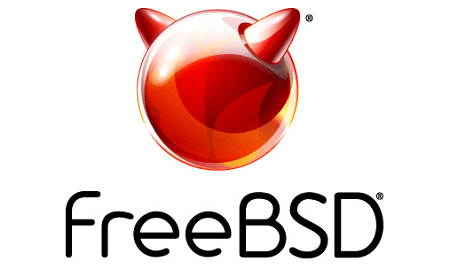
FreeBSD is a free and open-source UNIX operating system that is based on the Berkeley Software Distribution (BSD). The first version of the FreeBSD operating system was released in 1993. It was the most well-known open-source BSD OS in 2005 and is also responsible for more than three-quarters of all BSD systems installed with a simple and permissive license. It may not be labeled as a UNIX because of its legal limits while being compatible with UNIX internals and APIs. Because the license rules of FreeBSD allow developers a great deal of freedom in using it, many FreeBSD code has been reused by other operating systems like MAC OSX. Although it is not categorized as a UNIX OS, and the MAC OSX does have an official UNIX branding
The Lynne Jolitz and William Jolitz developers renamed the OS 386BSD after obtaining it to the 80386 CPUs. It is defined as a complete operating system because of its well-known characteristics, which include full-fledged documentation, tools, kernel, and device drivers. Its functional design makes it suitable for various applications. As a result, it operates in both desktop and server environments. It is widely assumed that it is used to develop the Apple Operating system.
Most of FreeBSD’s codebase has been included in other OS such as Darwin, TrueNAS, PlayStation 3, PlayStation 4, and Nintendo Switch gaming console system software. Third-party software can be installed through pkg, FreeBSD Ports, or by manually compiling source code. As part of its initiatives, a security team monitors all software included in the base distribution. In today’s world, FreeBSD is used for embedded platform computing. It is ideal for networking and server deployment, storage, and security, among other things.
Advantages and disadvantages of FreeBSD Operating System
There are various advantages and disadvantages of the FreeBSD OS. Some advantages and disadvantages of the FreeBSD OS are as follows:
Advantages
- It is a very mature and stable operating system. As a result, you may rely on it to perform as expected, which is not true of all open-source systems.
- It’s released under the BSD license, allowing you to freely use, share, modify, and even sell the finished product without making your work public. It differs from the GPL (which covers Linux), which needs any changes as part of a product to be passed back up to the project and made public. As a result, FreeBSD is utilized as the foundation for many prominent companies’ products, including Juniper, Citrix, iX Systems (TrueNAS), Netgate, Apple, etc.
- It provides better performance.
- It is mainly focused on security. It is one of the most secure systems available.
- Kernel customization on the fly. FreeBSD has a monolithic kernel, but you can also develop custom kernels that will work as you want them to.
- It has extensive documentation.
Disadvantages
- FreeBSD has a small community of supporters. This open-source software has a vibrant community, but it hardly compares to the Linux support community.
- There is a learning curve, and it takes much time and practice to understand completely.
- There is just a small quantity of third-party software available for FreeBSD.
OpenBSD Operating System
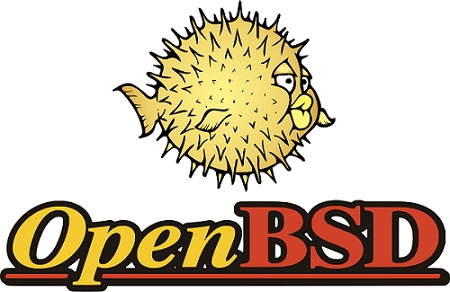
OpenBSD is a UNIX-like operating system that is based on Berkeley Software Distribution (BSD). It is one of the most secure systems available today. It runs on a currently available multi-platform 4.4 BSD Unix-based operating system. A group of volunteers at the University of California’s Berkeley Software Distribution Center built the Open BSD operating system. It is generally written using C, assembly, Perl, and UNIX shell. It was split from NetBSD in 1995. It is preferred due to its full disclosure policy. It enables the Open BSD OS developers to be completely transparent about any security problems they may have discovered.
It is becoming increasingly popular with experienced technical users due to its minimalistic and secure OS, which mainly focuses on enhancing the security of its OS at the expense of user satisfaction. It is not an operating system for low-skilled end users unless you wish to learn this OS code. The Open BSD operating system benefits contain proactive security, compatibility, portability, accuracy, built-in cryptography, standardization, and a small system footprint. The latest release is OpenBSD 7.0 version, which was released on Oct 14, 2021.
Features of OpenBSD Operating System
There are various features of the OpenBSD OS. Some features of the OpenBSD OS are as follows:
- It is a free and open-source operating system.
- It provides support 24/7.
- It provides better scalability.
- It removes all non-essential programs and reduces the problem of users encountering security issues.
- It contains OpenSSH, which is cryptographic software for encrypting user data.
- It is based on the multi-platform 4.4BSD operating system, which is a UNIX-based platform with advanced security features.
NetBSD Operating System
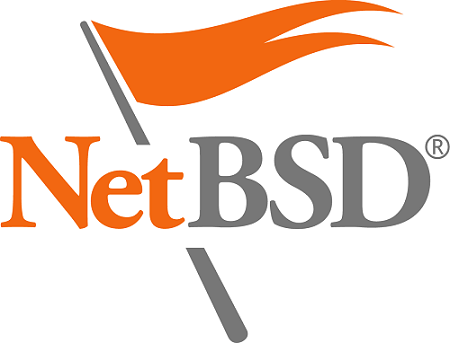
NetBSD is a free and open-source OS that is based on the 4.4BSD and 386BSD codebases. Its code clarity, portability characteristics, and meticulous design are used in a wide range of desktop systems, mobile devices, server systems, and embedded systems. NetBSD divides its device drivers between machine-dependent and machine-independent components by using a proprietary hardware abstraction layer to conceal hardware access details. Since version 2.0 in 2004, NetBSD has supported symmetric multiprocessing.
Developers use NetBSD’s cross-compiling infrastructure to create custom operating systems that use components from other systems. It is compatible with amd64 and i386 devices, which are similar to 64-bit x86-family computer systems or 32-bit x86-family generic systems powered by AMD or Intel CPUs. It is also compatible with ARM-based computers such as the PINE64, ODROID, Raspberry Pi, and ServerReady.
Features of NetBSD Operating System
There are various features of the NetBSD Operating System. Some features of the NetBSD Operating System are as follows:
- It is optimized for ARM processors, providing a substantial advantage in IoT applications.
- The availability of hardware acceleration and virtualization support paved the way for more complicated applications.
- It has a straightforward and traditional design language that is simple to understand and apply.
- It’s well-documented, and there are various methods to get direct help as a community-supported OS.
DragonFly BSD Operating System
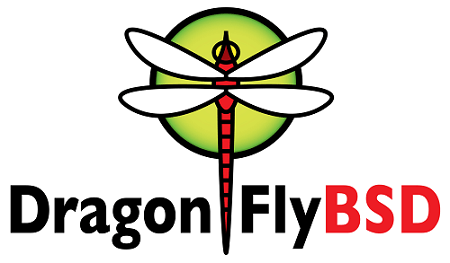
DragonFly BSD is a free and open-source OS that was developed by Matthew Dillon. It was firstly released in the 2003. It is a type of OS that is similar to other BSD-derived operating systems, including Linux. It is based on UNIX concepts and APIs and shares ancestor code with other BSD OS. It allows the BSD foundation to evolve in a completely different path than the FreeBSD, NetBSD, and OpenBSD series.
The distro floated to prominence with its effective features, such as the HAMMER filesystem, which provides in-built mirroring and historic accessibility. DragonFly includes a robust kernel and efficient symmetric multiprocessing mechanism for high-performance and server-side transactional computing.
User support is unparalleled in its extensive process, VFS, storage subsystems, and threading. DragonFly embraces the BSD ideology by providing users with direct access to numerous apps in binary and source versions.
The latest version of DragonFly, 6.2.1, has been released. It includes hardware support for type-2 hypervisors with NVMM, as well as the experimental ability to remote-mount HAMMER2 volumes, an AMD GPU driver, and other enhancements.
Features of DragonFly BSD Operating System
There are various features of the DragonFly BSD Operating System. Some features of the DragonFly BSD Operating System are as follows:
1. Kernel
Compared to the initial FreeBSD-4.8 version, major changes have been made to the entire DragonFly kernel.
2. NULL Filesystem Layer
Several OS uses a null or loop-back filesystem. The DragonFly null filesystem is completely separate. It supports arbitrary mount locations that do not loop, which is a restriction of other OS, making it highly versatile in its application. It’s also very fast and dependable, which few other operating systems can say about their null filesystem levels.
3. Variant Symlinks
Variant symlinks provide users, administrators, and application writers with a very helpful tool for configuration and management. These be utilized within the ordinary symbolic link and resolved at run-time.
4. Managed SSD support
The swapcache feature enables the use of SSD-configured swap to cache clean filesystem data and meta-data. This functionality is carefully regulated to maximize the SSD’s write endurance. Typically, swapcache decreases or removes overheads associated with managing filesystems with many distinct inodes. The swap subsystem in DragonFly BSD also permits swap partitions that are substantially larger than standard swap partitions. By default, 64-bit computer systems support up to 512GB of swap.
GhostBSD Operating System
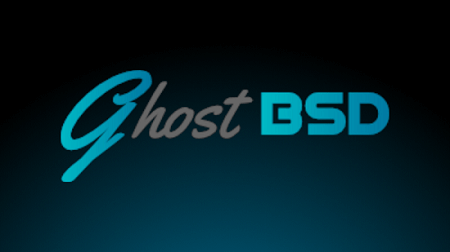
GhostBSD is a FreeBSD-based Unix-like operating system with MATE as the default desktop environment and an Xfce-desktop community edition. It was firstly released in 2010. It aims to be easy to install and easy to use. The project’s purpose is to combine security, usability, openness, privacy, stability, freedom, and free of charge.
It was based on FreeBSD before GhostBSD 18.10. In May 2018, GhostBSD OS was announced that future versions of the OS would be based on TrueOS. GhostBSD reverted to FreeBSD due to the discontinuation of TrueOS in 2020.
Features of GhostBSD Operating System
There are various features of the GhostBSD Operating System. Some features of the ghostBSD Operating System are as follows:
- It provides pre-installed multimedia codecs.
- It provides compatibility with Linux binaries.
- It has a MATE desktop environment.
- It has an automatic NIC configuration.
- It has user-friendly installation.
- It provides an integrated firewall.
- It includes full access to the FreeBSD software ports collection, pkgng, and custom package management.
MidnightBSD Operating System
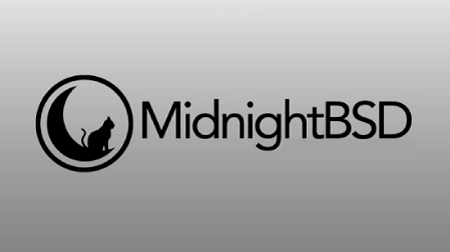
FreeBSD has provided users with various paid and open-source OS, and MidnightBSD OS is one of them. It is a desktop OS that is based on FreeBSD with a few user-friendly enhancements. Lucas Holt founded it and named a black Turkish Angora named Midnight after his cat.
MidnightBSD includes a ready-to-use desktop with GNU step licensed open-source software such as X.org and GCC. The familiar Xfce default desktop and application setup allows BSD beginners to dive into the OS quickly.
MidnightBSD makes security, file management, scheduling, and other tasks a breeze with its quick user interface. Users may expect a highly optimized desktop interface that is unintimidating to UNIX system beginners. Users may also expect various network engineering development and server deployment tools.
MidnightBSD has recently incorporated features from DragonFly and OpenBSD. It allows users to run the operating system on highly customized computer systems configurations and ports. It even synchronizes with subsequent versions of FreeBSD.
Features of MidnightBSD Operating System
There are various features of the MidnightBSD Operating System. Some features of the MidnightBSD Operating System are as follows:
- It uses the Xfce desktop but originally utilized Window Maker and GNUstep, which is similar to the NeXTSTEP environment and serves as the basis for modern macOS.
- It also includes the doas command from the OpenBSD project for administrative purposes. It’s identical to sudo, but its syntax file is simpler to understand.
- It has its own package manager and ports.
NomadBSD Operating System

NomadBSD is a FreeBSD-based Unix-like OS with a persistent live system for USB flash devices. It is unique because it is intended to be a live desktop OS with automatic hardware detection and setup.
NomadBSD was firstly released on February 19, 2018. It’s a live FreeBSD system that can boot from a USB flash drive with BIOS or UEFI compatibility. It allows a user to see whether or not their existing hardware configuration will work with FreeBSD OS before putting effort into directly installing it. It may be used for data recovery or education purposes due to its unique configuration. The team upgraded from FreeBSD 12.x to 13.x and modified the project’s version scheme on May 11, 2021.
Features of NomadBSD Operating System
There are various features of the NomadBSD Operating System. Some features of the NomadBSD Operating System are as follows:
- NomadBSD may run on a variety of hardware combinations like FreeBSD OS.
- It comes pre-loaded with the Openbox window manager, although it may easily be modified to run other window managers and desktop environments.
Conclusion
Here, you have learned about all the BSD-based operating systems. If you are setting up a computer and want an easy-to-use version of BSD, PC-BSD is the way to go because it is developed with your needs in mind. Although, if you want to configure your server, you may select the OpenBSD operating system. If you want to tighten security, you should select the FreeBSD operating system. BSD OS attracted users due to its robust kernel, functional system software ecosystem, and flexible license. These OS’s are the best of the current generation of open-source Unix-inspired operating systems.
